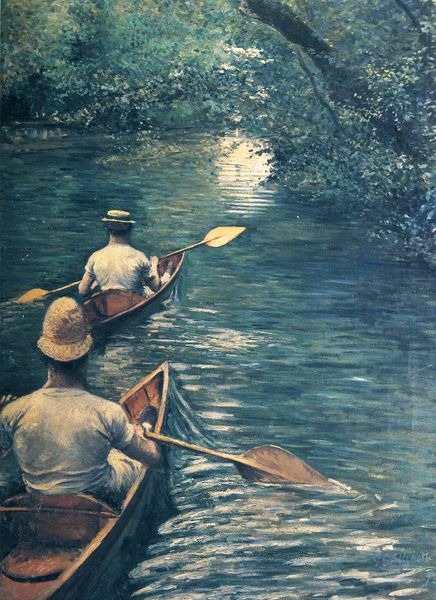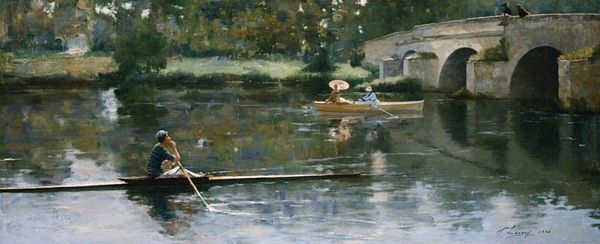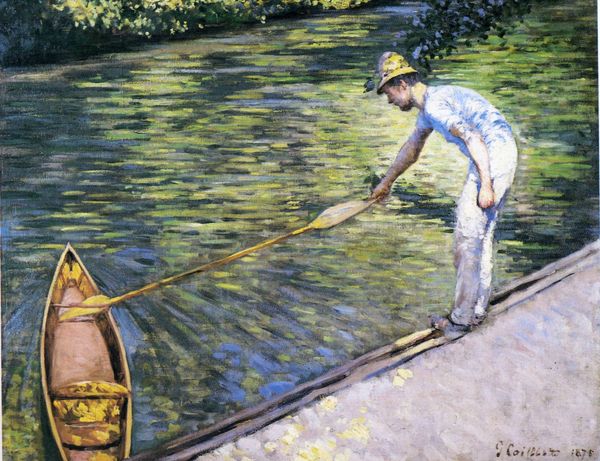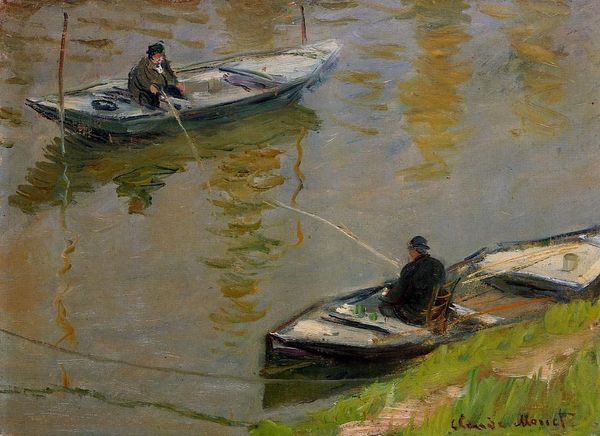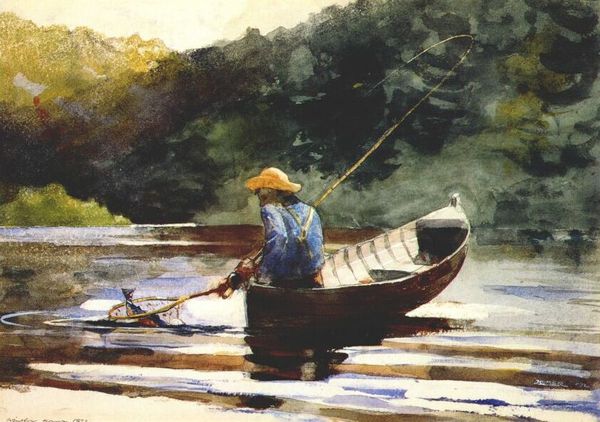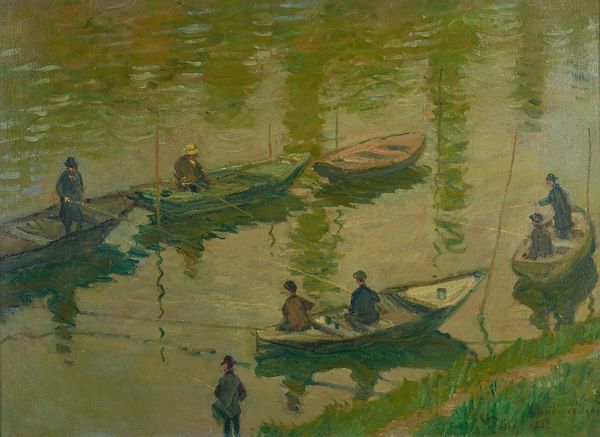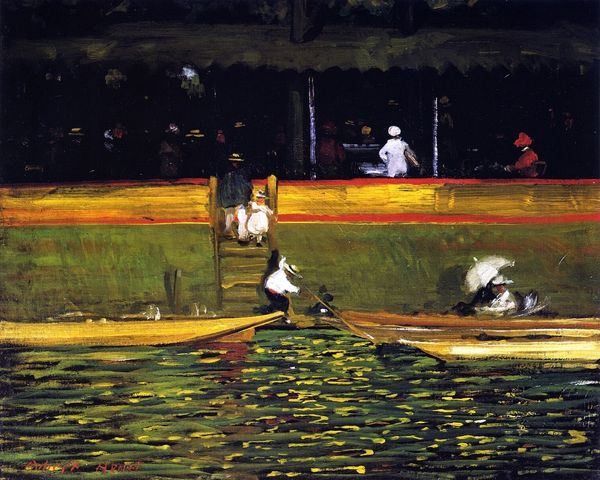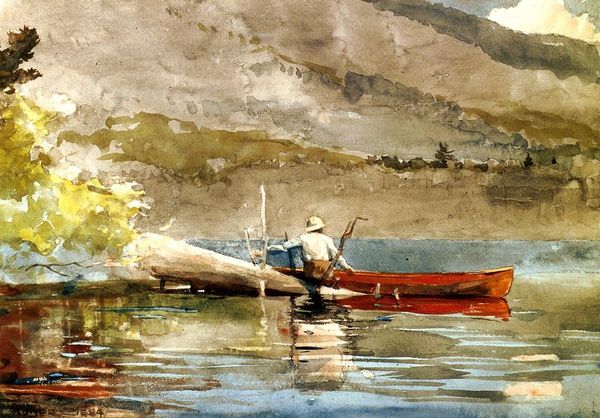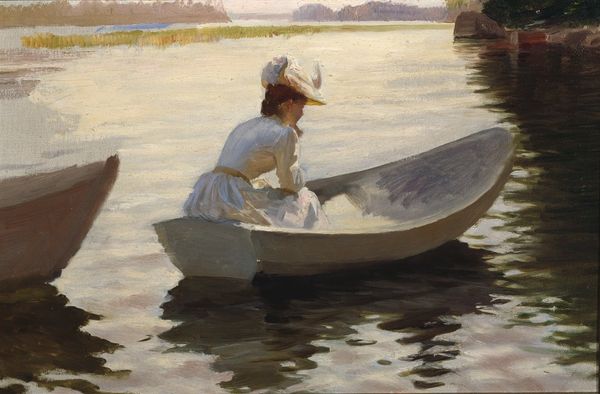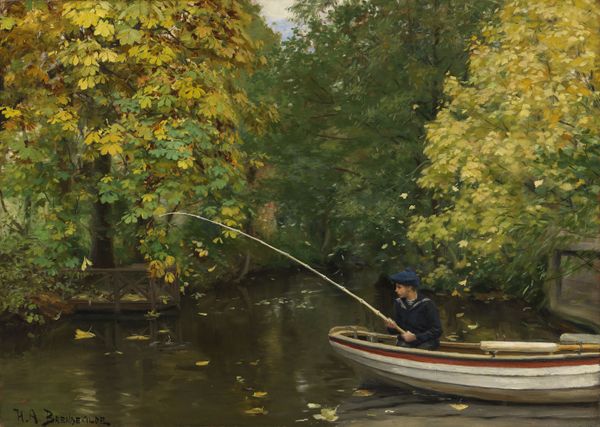
painting, plein-air, oil-paint
#
painting
#
impressionism
#
plein-air
#
oil-paint
#
landscape
#
oil painting
#
genre-painting
Copyright: Public Domain: Artvee
Curator: Today, we're considering Gustave Caillebotte’s painting "Skiffs," completed in 1877. Caillebotte offers a glimpse into the leisure activities of the Parisian bourgeoisie during the late 19th century. Curator: My immediate reaction is to the striking use of perspective; the emphasis on horizontal lines is palpable—tranquil, almost cinematic in its breadth. The chromatic unity created by muted greens and blues evokes serenity. Curator: I agree. Beyond its formal qualities, however, this work reflects a specific social context. Caillebotte, himself from a wealthy family, depicts scenes of bourgeois life. It’s important to consider who has access to this leisurely pursuit of rowing and who doesn't. Rowing on the Yerres became accessible and desirable as commercial transportation declined; one could have access to physical fitness, and the outdoor, but also perform and display status. Curator: Absolutely. However, I see beyond this perspective and understand the use of complementary gold-yellow color of the paddles against the green-blue hues; it pulls our eye into the perspective, focusing our attention on the rhythmic stroke—or, it invites you to follow that optical journey. It feels to me an impressionistic rendering where he captures the essence of the movement of the rower cutting through the water and also playing with a point of view that invites the observer into that experience of seeing. Curator: Perhaps. The subjects wear nearly identical clothing. What interests me is considering how visual representations such as this play into the construction of masculinity during this era, also thinking about societal norms. Even through depictions of leisure, subtle messages about class and social hierarchy are reinforced. Curator: Maybe so, but what I see here is the way he broke with some conventions through a radical naturalism, by manipulating composition, perspective, and optical effects—the reflection on water as an almost mirror image of that which exists and coexists within the banks of the Yerre River. It isn't as if it weren't there, Caillebotte is merely showing what is self-evident. Curator: Precisely. He offers us not just an idyllic scene, but also clues into how class, identity, and social norms were constructed and performed within this slice of Parisian society. Curator: Indeed. The way we've unpacked both its intrinsic artistry and socio-cultural resonances. A truly enlightening work on several levels.
Comments
No comments
Be the first to comment and join the conversation on the ultimate creative platform.
